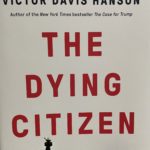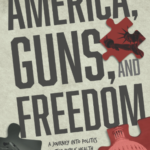When Liberalism Was Tough
On the evening of Thursday, September 20, 2007 at the offices of The
Education Sector, Albert Shanker was remembered as “the founding father of modern
teacher unionism,” as a “leading education reformer” and a “tough liberal.” He “built
teacher unions into a powerful force in education locally in New York City, and then
nationwide,” author and educator E. D. Hirsch Jr. remembered.
The author of the book Tough Liberalism: Albert Shanker, and the Battles Over
Schools, Unions, Race and Democracy, Richard Kahlenberg, explained how in the 1960’s, when it was illegal for public employees to go on strike, the union founder convinced several thousand colleagues to “break the law and be fired.” He knew that the school board could not fire all the teachers, and the New York City Board of Education was forced to recognize the right of the United Federation of Teachers to bargain on behalf of teachers.
From then on, union representation of New York City teachers grew
from 5% to 97% as other teachers joined. Teachers had been poorly paid, forced to eat lunches while supervising students, and told to bring doctor’s notes if they were out sick. Collective bargaining brought them higher salaries and new work rules.
Together with men like Charles Cogen, the President of the United
Federation of Teachers at the time, and David Selden, the American Federation of
Teachers’ organizer, Shanker helped “to light the spark of teacher unionism in New
York City,” but the influence of Shanker and his colleagues was felt far beyond New
York City as teachers in other cities such as Detroit and Philadelphia fought for
collective bargaining rights. The National Education Association, which was adamantly
opposed to collective bargaining, was forced to recognize the influence of the American
Federation of Teachers.
The membership of the Shanker’s union grew from 50,000 in 1961 to more than
one million by the time he died in 1997. Today’s teacher’s unions are believed to be the most influential single force in American education, although Shanker might disagree with their drift today as he did when he lived.
In 1983 Shanker embraced the report of President Reagan’s National Commission
on Excellence in Education. Neither the president nor the commission were particularly
appreciated by most teacher’s union members.
Additionally, Shanker proposed a “rigorous competency test for new teachers.”
He devised a plan to recognize superior performance of teachers with greater pay
and proposed innovations to restructure schools and popularized the idea of charter
schools.
These schools are still not popular with most teachers’ unions. Shanker’s
greatest impact on education reform was his embracing a “system of education standards,
testing and accountability comparable to most leading European nations.”
Shanker believed in unions and public schools as a way of promoting “greater
equity and social mobility in America” but he took more conservative positions on racial
questions, school discipline and national defense. “Shanker would say something one day
that would delight liberals and infuriate conservatives,” former President Clinton has
said. “The next day he would make conservatives ecstatic and the liberals would be
infuriated.”
Nirmala Punnusami is an intern at the American Journalism Center, a training program run by Accuracy in Media and Accuracy in Academia.



